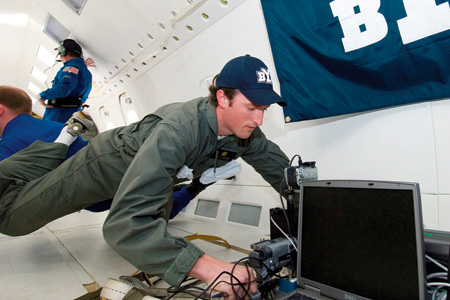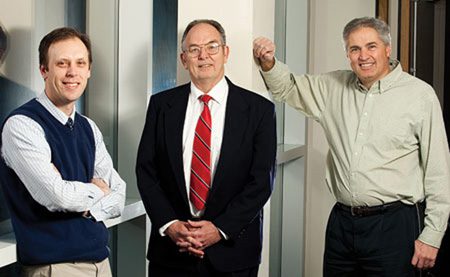1. The Eyring Science Center was the first BYU building with an elevator.
2. BYU’s rock collection includes some of the world’s largest gypsum crystals, gathered by James E. Talmage, once a BYU student and professor and later an LDS apostle.
3. The Foucault pendulum in the ESC is surrounded by numbers 1 through 37 on the floor. Due to Provo’s latitude, it takes 37 hours for the pendulum to pass through 360 degrees as the earth rotates beneath it. At the North Pole, a Foucault pendulum would appear to make a full circle in 24 hours; at the equator, the pendulum would never make it around; and in the Southern Hemisphere, it reverses direction.
4. The ESC is home to the only Wave-a-Tron in the world.
5. During the renovation, crews found a note from two former students tucked behind a breaker box. “This is to certify,” the note said, “that on January the thirtieth, in the year of our God nineteen hundred and fifty seven–Marcus Charles Nielsen . . . and Robert Dale Childs . . . –Did open up and observe the mechanical workings and facts contained therein.”
6. The renovated science center has a hallway on the fourth floor long enough to allow the measuring of the speed of light.
7. The ESC originally included a seismic recording station in the basement, but the vibrations caused by students rushing between classes caused too much distraction, and the station was scrapped.
8. A small chip in the floor near the “1” of the Foucault pendulum was caused in the mid-1980s when a rambunctious youngster decided to ride the pendulum. The ride was short-lived, however, as the wire broke and the 250-pound sphere drove its spike into the green terrazzo floor.
9. When the ESC was dedicated in 1950, the Korean War had just begun, there were 5,429 students on campus, tuition and fees amounted to $135 per year, and students could park their cars right next to the new building.
10. The acoustics lab in the basement was originally a reverberation chamber in which, it is said, echoes lasted 10 to 15 seconds. A few years after construction, however, insulation and padding modified the room into an anechoic chamber–a room with no echoes.









